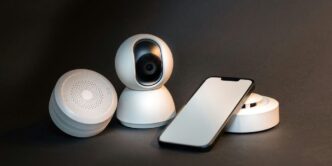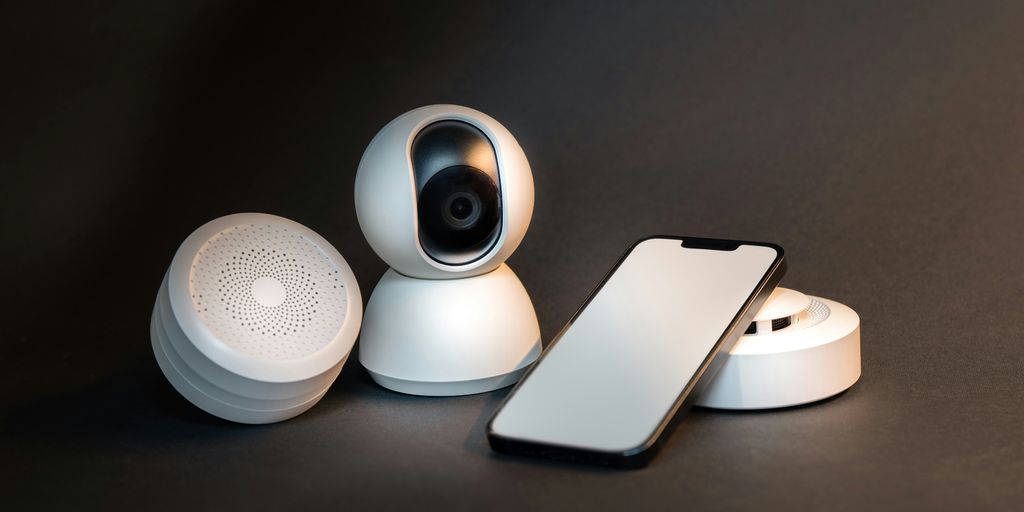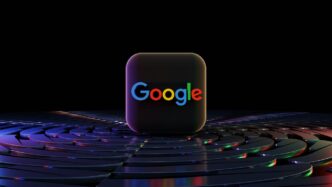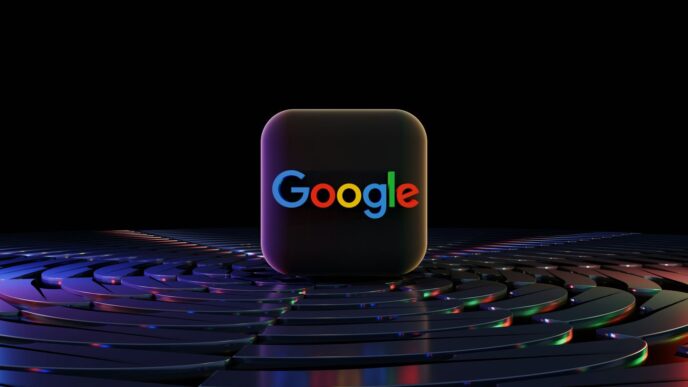Ever wonder what people mean when they talk about the “Internet of Things”? It sounds pretty techy, right? But really, it’s just about everyday stuff getting connected to the internet. Think about your smart speaker or even some newer cars; they’re all part of this big network. This guide is going to break down the whole iot meaning for you, so it all makes sense.
Key Takeaways
- IoT connects everyday objects to the internet, letting them send and receive data.
- These systems rely on things like advanced sensors and different ways to connect, plus software that makes everything work.
- The idea of connected devices has been around for a while, but the term “Internet of Things” was first used in 1999.
- IoT is changing a lot of things, from how businesses run to how we live in our homes and cities.
- A big part of IoT is how devices talk to each other, how they can change, and how easily you can add more devices as needed.
Defining the Internet of Things
Understanding the Core IoT Meaning
Okay, so what is the Internet of Things, really? It’s more than just your fridge ordering milk when you’re out. At its heart, IoT is about connecting everyday objects to the internet, allowing them to send and receive data. Think of it as giving a voice to things that were previously silent. It’s about making devices smarter and more responsive. It’s also about creating a network where these devices can communicate with each other without direct human intervention. It’s a pretty big deal, and it’s changing how we interact with the world around us. The Internet of Things is a network of interconnected devices.
Key Components of IoT Systems
So, what makes up an IoT system? It’s not just about the ‘things’ themselves. There are a few key pieces that need to work together:
- Devices/Sensors: These are the ‘things’ that collect data from the environment. Could be temperature sensors, cameras, or even your smart watch.
- Connectivity: This is how the devices connect to the internet or a local network. Wi-Fi, Bluetooth, cellular, and other protocols are used.
- Data Processing: The collected data needs to be processed and analyzed. This can happen on the device itself (edge computing) or in the cloud.
- User Interface: This is how we interact with the system. It could be a mobile app, a web dashboard, or even a voice assistant.
Without all these pieces working together, you just have a bunch of unconnected gadgets. It’s the system as a whole that creates the value.
The Evolution of IoT Terminology
The term "Internet of Things" didn’t just pop up overnight. It’s been evolving for years. Back in the day, people were talking about embedded systems and pervasive computing. Then, in 1999, Kevin Ashton coined the term while working at Procter & Gamble. He was thinking about using RFID tags to track inventory. The idea was that if we could tag everything, we could know exactly where it is and when it needs replacing. Over time, the concept broadened to include all sorts of connected devices, not just those with RFID tags. Now, IoT encompasses everything from smart home devices to industrial sensors. It’s a pretty broad term, and it’s still evolving as new technologies emerge. The evolution of IoT has been rapid.
The Technological Foundation of IoT
Advanced Sensor Technology and Edge Computing
Okay, so let’s talk about the real guts of IoT – the tech that makes it all tick. It’s not just about slapping a sensor on something and calling it "smart." It’s way more involved. Advanced sensor tech is where it starts, and it’s getting seriously sophisticated. These aren’t your grandpa’s sensors; we’re talking about devices that can do some heavy lifting right there on the spot, thanks to edge computing. This means they can process data locally, make decisions, and only send the important stuff back to the cloud. Think about it: less bandwidth, faster responses. It’s a win-win.
Connectivity Protocols for IoT Devices
Connectivity is the glue that holds the IoT universe together. You’ve got a bunch of different protocols vying for attention, each with its own strengths and weaknesses. Wi-Fi is the old reliable, good for bandwidth-heavy stuff but can be a power hog. Bluetooth is great for short-range, low-power applications. Then you’ve got Zigbee and Z-Wave, which are specifically designed for IoT, offering mesh networking and low power consumption. And let’s not forget cellular (LTE-M, NB-IoT), which is perfect for devices that need wide-area coverage. Picking the right connectivity protocols is key for any IoT deployment.
The Role of Software and Algorithms in IoT
Hardware is cool and all, but software and algorithms are what really bring IoT to life. It’s the software that tells the sensors what to do, how to process data, and how to communicate with other devices. Algorithms are the brains behind the operation, turning raw data into useful insights. Machine learning algorithms can identify patterns, predict future events, and even automate actions. Think about a smart thermostat that learns your schedule and adjusts the temperature accordingly. That’s all thanks to software and algorithms working behind the scenes. Without them, IoT would just be a bunch of connected devices doing nothing interesting.
Historical Milestones in IoT Development
Early Concepts and Pioneering Projects
So, where did this whole Internet of Things thing even come from? It wasn’t like someone woke up one day and bam, connected refrigerators. The seeds were planted way back. One of the earliest examples I remember reading about was this Coca-Cola vending machine at Carnegie Mellon University in the early 1980s. Seriously! It could report its inventory and the temperature of the sodas inside. Talk about a smart vending machine! It wasn’t exactly what we think of as IoT today, but it was a step in that direction – a device connected to a network, sharing data.
Then you had Mark Weiser’s work on ubiquitous computing in the early ’90s. He envisioned a world where computers were woven into the fabric of our lives, not just sitting on our desks. That idea really laid the groundwork for thinking about how everyday objects could become "smart" and connected. It’s kind of wild to think about how long ago some of these ideas were floating around.
The Coining of the Term "Internet of Things"
Okay, so we had the early concepts and the pioneering projects, but when did someone actually say, "Hey, let’s call this the Internet of Things"? That honor goes to Kevin Ashton. He was working at Procter & Gamble in 1999, and he needed a way to get management excited about RFID tags. He figured if he could tie it to the internet, it would sound way cooler. And it worked! He coined the phrase "Internet of Things" to describe how RFID could be used to track items through the supply chain. It’s funny how a simple marketing term ended up defining a whole technological revolution. According to Cisco Systems, the IoT was "born" between 2008 and 2009, when the number of connected "things" exceeded the number of people connected to the internet.
From RFID to Modern IoT Ecosystems
So, RFID was the gateway drug, you could say. But the IoT has become so much more than just tracking stuff with RFID tags. Now we’re talking about sensors everywhere, advanced sensor technology collecting all kinds of data, and devices communicating with each other in complex ways. Think about smart homes, smart cities, industrial automation – it’s all part of the same trend. The cost of sensors and connectivity has plummeted, making it possible to connect just about anything to the internet. And with the rise of cloud computing and big data analytics, we can actually do something useful with all that data. It’s been a long journey from that Coca-Cola vending machine to where we are today, but it’s clear that the Internet of Things is here to stay.
How IoT Transforms Industries and Daily Life
Impact on Business Operations and Efficiency
IoT has really changed how businesses work. It’s not just about connecting devices; it’s about making things smarter and more efficient. Think about factories using sensors to monitor machines. They can spot problems before they happen, which means less downtime and lower costs. Retailers can track inventory in real-time, so they always know what’s in stock. Even agriculture benefits, with farmers using sensors to optimize irrigation and fertilizer use. It’s all about using data to make better decisions and streamline processes. For example, real-time monitoring of machinery can reduce downtime.
Enhancing Consumer Experiences with IoT
IoT isn’t just for businesses; it’s making our lives easier too. Smart home devices like thermostats and lighting systems let us control our environment from our phones. Wearable devices track our fitness and health. Even shopping is changing, with IoT-enabled devices allowing for easier transactions and personalized recommendations. It’s all about convenience and customization. Here’s a quick look at how IoT is improving customer service:
- Personalized experiences: Tailored product recommendations and offers.
- Improved convenience: Easier transactions and access to information.
- Better support: Proactive customer service based on device data.
IoT in Smart Homes and Urban Environments
Smart homes are just the beginning. IoT is also transforming our cities. Smart traffic systems can reduce congestion. Smart grids can optimize energy distribution. Even waste management can be improved with sensors that monitor fill levels. It’s about creating more sustainable and livable urban environments. Imagine a city where traffic flows smoothly, energy is used efficiently, and resources are managed effectively. That’s the promise of IoT in urban environments. The Internet of Things is revolutionizing various industries.
Essential Characteristics of IoT Networks
Interconnectedness and Data Exchange
IoT networks are all about connections. The ability for devices to communicate and share data is the cornerstone of any IoT system. It’s not just about devices talking to each other; it’s about them doing it seamlessly, regardless of their manufacturer or specific function. Think of your smart thermostat chatting with your smart lights, all orchestrated by a central hub. This data exchange is what allows for automation and intelligent decision-making.
- Devices need to be able to discover each other on the network.
- They must use common protocols to understand the data being transmitted.
- Security measures are needed to protect the integrity of the data.
Dynamic Nature of IoT Devices
One thing that sets IoT apart from traditional networks is how dynamic it is. Devices are constantly joining, leaving, and changing their state. A sensor might be online one minute and offline the next due to a power outage. A delivery truck with a GPS tracker might move in and out of range. This constant flux requires IoT networks to be adaptable and resilient. The IoT meaning is all about devices that can adapt to changing conditions.
- Device status changes frequently (online/offline).
- The number of devices in a network can vary significantly over time.
- Devices may move physically, changing their network location.
Scalability in IoT Deployments
IoT deployments can range from a handful of devices in a smart home to millions of sensors in a smart city. The network infrastructure needs to be able to handle this wide range of scales. A system designed for a small office might crumble under the load of a large industrial facility. Scalability is not just about adding more devices; it’s about maintaining performance and reliability as the network grows.
- Horizontal scaling: Adding more devices without impacting performance.
- Vertical scaling: Upgrading existing infrastructure to handle increased load.
- Distributed architecture: Spreading the workload across multiple servers or nodes.
Consider this example of how device count impacts network load:
| Deployment Scenario | Number of Devices | Data Volume (per hour) | Network Bandwidth Required | Management Complexity |
|---|---|---|---|---|
| Smart Home | 10-50 | 100MB – 1GB | 10 Mbps | Low |
| Smart Office | 100-500 | 1GB – 10GB | 100 Mbps | Medium |
| Smart Factory | 1000-10000 | 10GB – 100GB | 1 Gbps | High |
| Smart City | 100000+ | 1TB+ | 10 Gbps+ | Very High |
The Power of Data in IoT
IoT devices? They’re basically data factories. All day, every day, they’re churning out information. But raw data alone isn’t worth much. It’s what you do with that data that matters. Think about it: a smart thermostat just recording temperature is okay, but a smart thermostat that learns your preferences and adjusts automatically? That’s where the real magic happens. Let’s look at how this data transforms the IoT landscape.
Data Collection and Generation by IoT Devices
IoT devices are constantly gathering data from their surroundings. This could be anything from temperature and humidity to location, pressure, or even images and video. The sheer volume of data generated is staggering. The ability of IoT devices to collect and store data is a key feature. It’s not just about what they collect, but how much. Consider a network of sensors monitoring traffic flow in a city. Each sensor is sending data constantly, creating a massive stream of information that needs to be managed. This data is the raw material for insights and automated actions.
Analytics and Insights from IoT Data
Turning raw data into something useful requires analytics. This is where things get interesting. We’re talking about using tools and techniques to identify patterns, trends, and anomalies in the data. For example, analyzing data from industrial equipment can reveal potential maintenance issues before they cause a breakdown. Or, looking at energy consumption data can highlight areas where you can save money. It’s about finding the stories hidden within the numbers. Companies are increasingly relying on AI to manage data. Here’s a simple example:
| Data Source | Type of Insight |
|---|---|
| Smart Thermostats | Energy consumption patterns, peak usage times |
| Wearable Fitness Trackers | Activity levels, sleep patterns, heart rate trends |
| Industrial Sensors | Equipment performance, potential failures |
Automated Actions Driven by IoT Intelligence
The ultimate goal of IoT data analysis is often to automate actions. This means using the insights gained from the data to trigger specific responses without human intervention. Imagine a smart irrigation system that automatically adjusts watering schedules based on weather forecasts and soil moisture levels. Or a security system that automatically locks doors and alerts authorities when it detects unauthorized entry. This is where IoT moves beyond simply collecting data and starts actively improving our lives and [industrial operations](#1f16].
Here are some examples of automated actions:
- Adjusting lighting levels in a building based on occupancy and time of day.
- Optimizing traffic flow in a city based on real-time congestion data.
- Automatically reordering supplies when inventory levels get low.
Wrapping It Up
So, we’ve gone over a lot about the Internet of Things. It’s pretty clear that IoT isn’t just some passing trend; it’s really changing how we live and work. From making our homes smarter to helping businesses run better, connected devices are everywhere now. It’s a big deal, and it’s only going to get bigger. Just remember, as more things get connected, we’ll keep seeing new ways IoT makes our lives easier and more interesting. It’s a wild ride, and we’re all on it.
Frequently Asked Questions
What exactly is the Internet of Things (IoT)?
The Internet of Things, or IoT, is basically a huge network of everyday things that can talk to each other and to us through the internet. Think of it like all your gadgets, from your smart fridge to your fitness tracker, being able to share info and work together.
How does IoT actually work?
IoT works by connecting devices with sensors to the internet. These sensors gather information, like temperature or movement. Then, this information is sent over the internet to be looked at and used to make things happen, sometimes even without a person needing to do anything.
What are the main benefits of IoT?
IoT makes our lives easier and smarter. It can help businesses run better by keeping track of things, and it can make our homes more comfortable by letting us control lights or thermostats from far away. It also helps cities manage traffic and energy more wisely.
Are there any problems or challenges with IoT?
While IoT is super helpful, it also has some challenges. One big one is keeping all the information safe and private. Another is making sure all the different devices can talk to each other, since there are so many different kinds.
Can you give me some examples of IoT in real life?
You probably use IoT every day without even knowing it! Smart home devices like Alexa or Google Home, fitness trackers, smartwatches, and even some cars that can connect to the internet are all examples of IoT in action.
What’s next for IoT?
The future of IoT looks really exciting! We’ll see even more devices connected, making our homes, cities, and even our health care smarter and more efficient. It’s all about making technology work seamlessly in the background to improve our daily lives.














